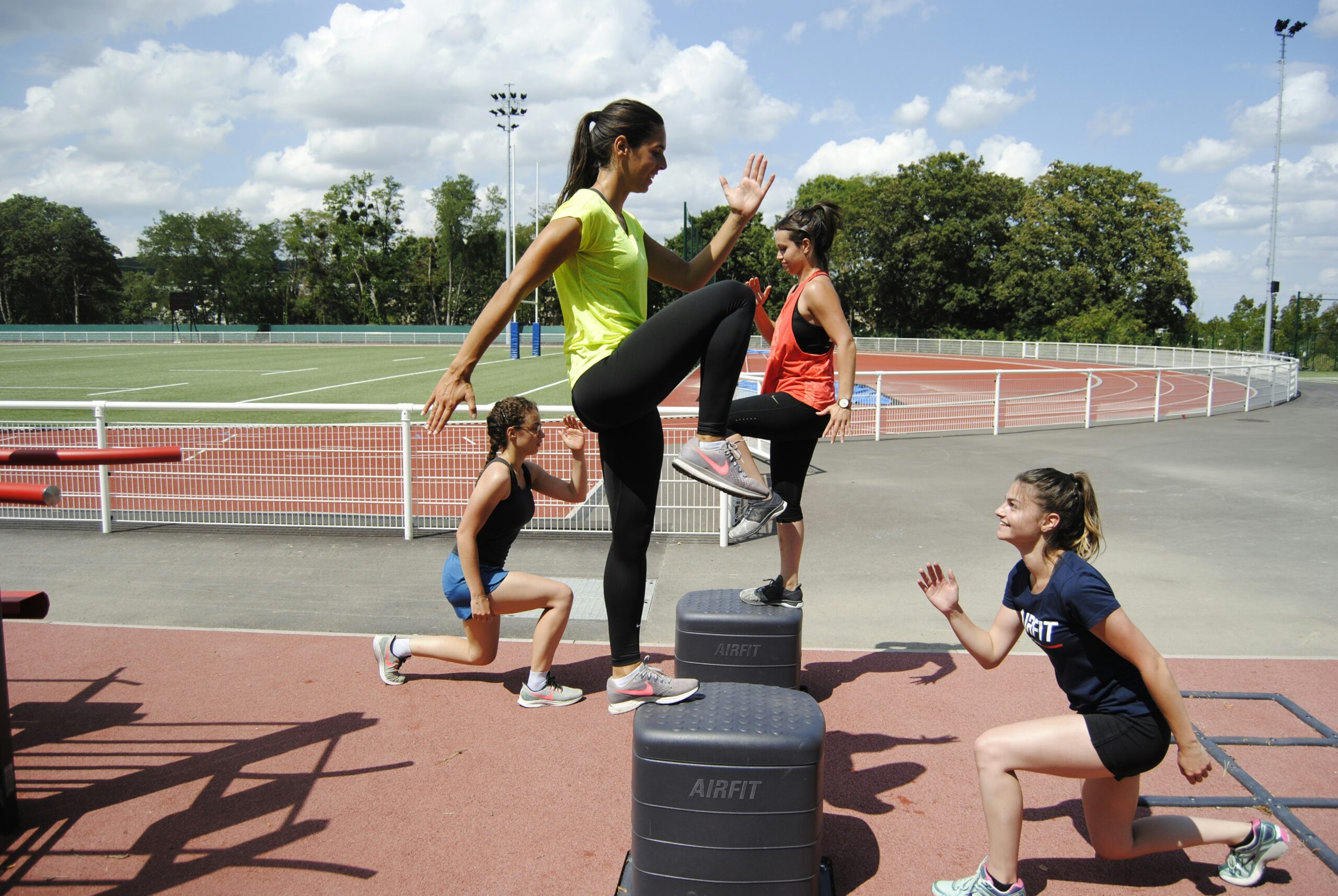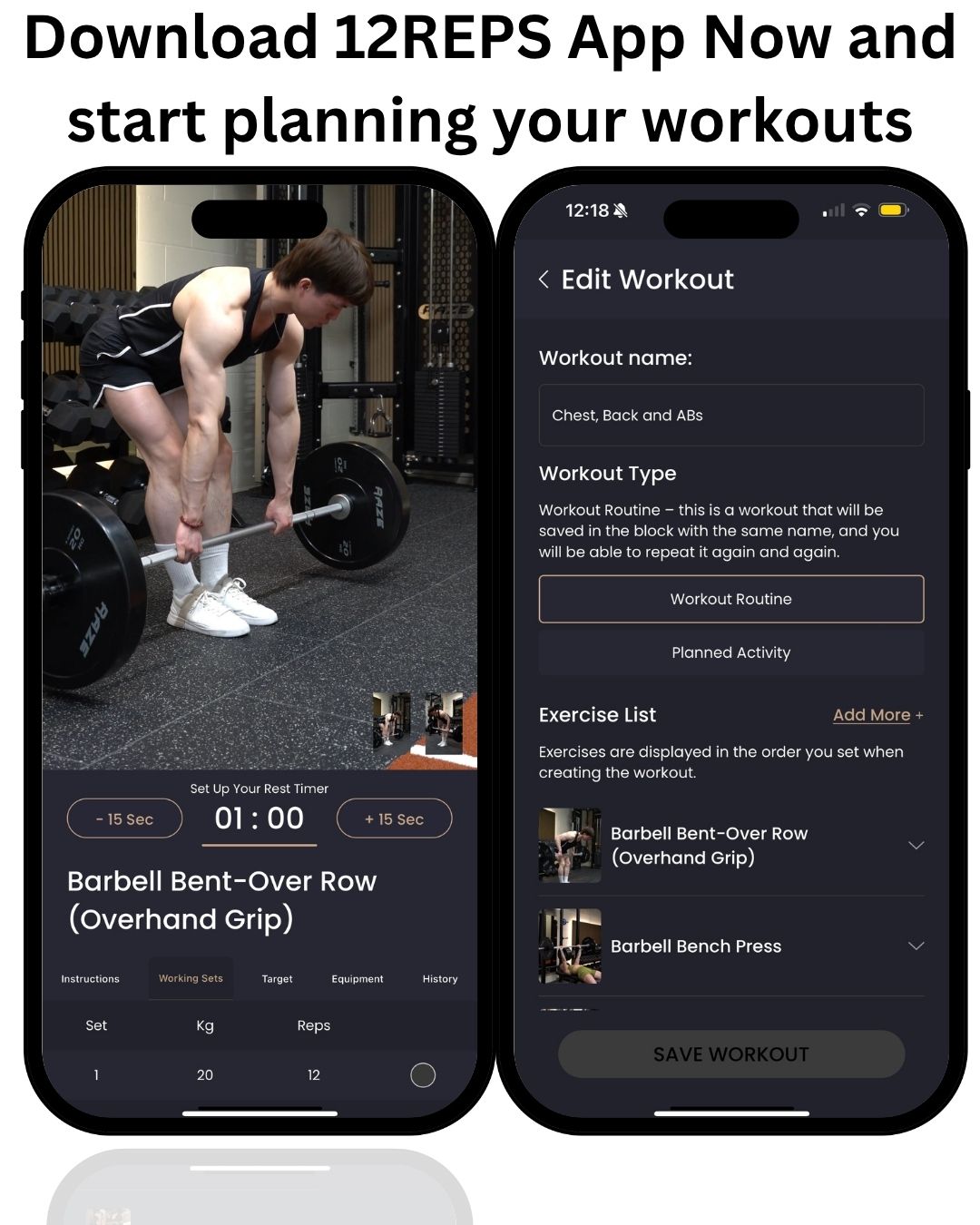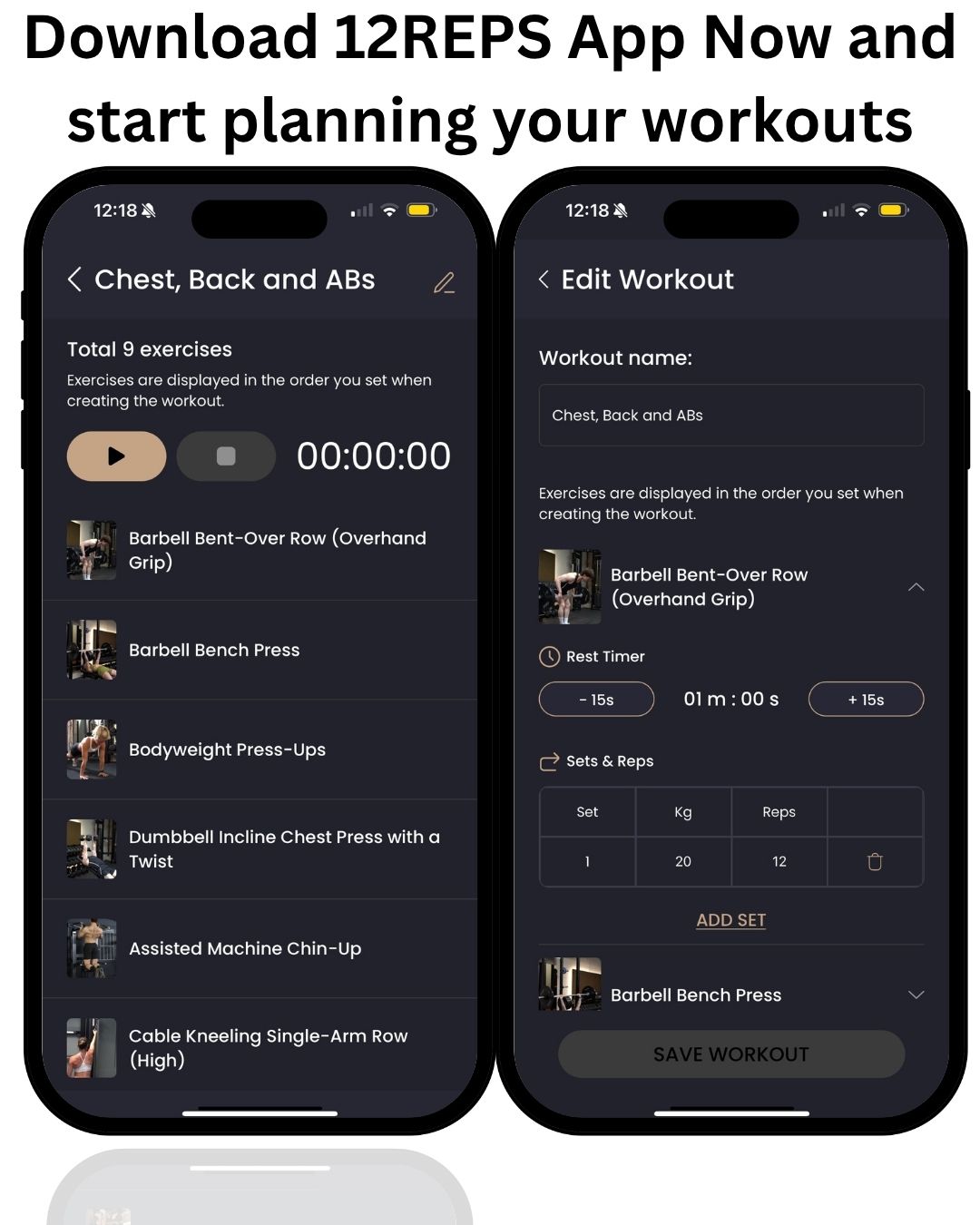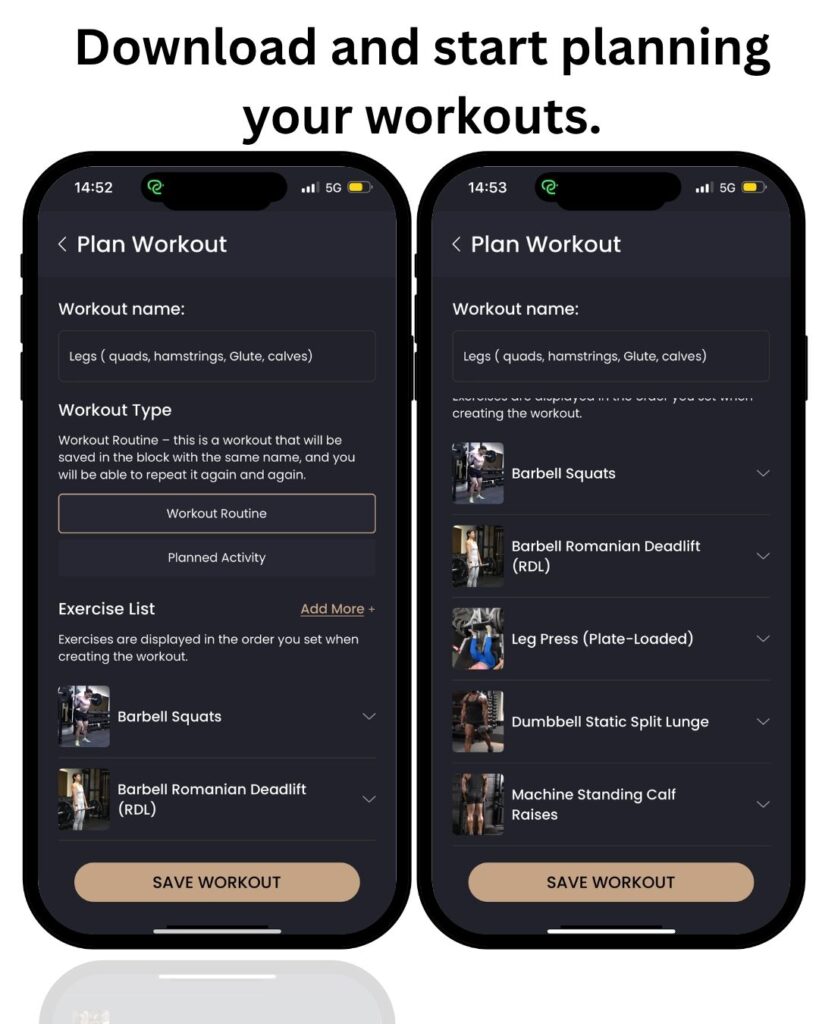By Will Duru, BSc (Hons) Sport and Exercise Science, Award-winning Personal Trainer with over 10 years of experience in strength training and optimising recovery.
Many people over 40 believe that to build muscle and stay in shape, they need to spend countless hours in the gym every single day. This “more is always better” philosophy can be incredibly overwhelming and is, in fact, a common misconception. The truth is, your body needs time to rest and recover, especially as you age. Overtraining can be counterproductive, leading to burnout and injury rather than muscle growth. The key to building muscle after 40 isn’t about living in the gym; it’s about training smarter, not harder. This article will debunk the myth of daily workouts and introduce you to the concept of efficient training, where quality trumps quantity. We’ll also touch on how tools like the 12reps app can help you create a sustainable and effective workout plan.

The "Why" Behind Rest Days
To understand why rest days are so crucial, it’s important to grasp the science of muscle growth, also known as hypertrophy. When you lift weights, you create microscopic tears in your muscle fibers. It’s during rest days that your body repairs these tears, and in the process, builds your muscles back stronger and bigger. Think of it like building a house: you can’t just keep adding bricks without allowing the mortar to set. Your muscles need that “setting” time to grow. [1]
As we age, our bodies undergo hormonal shifts that can affect recovery. This makes it even more important for individuals over 40 to listen to their bodies and incorporate adequate rest into their training schedules. A structured strength training program that strategically includes rest days is far more effective for long-term muscle gain than a haphazard approach of working out every day. [2]

Finding Your "Sweet Spot"
So, how often should you be strength training? For most people over 40, 3-4 sessions per week is the optimal frequency. This provides enough stimulus for muscle growth while allowing for adequate recovery time. A sample weekly split could be three full-body workouts on non-consecutive days (e.g., Monday, Wednesday, Friday) or an upper/lower body split performed four times a week (e.g., Monday – Upper, Tuesday – Lower, Thursday – Upper, Friday – Lower). Consistency is more important than intensity. It’s better to stick to a 3-4 day a week plan for months than to go all-out for a few weeks and then burn out. [3]
Tracking your workouts is a great way to ensure you’re progressing without overdoing it. A workout tracker can help you monitor your frequency, the weights you’re lifting, and your overall performance. This data can help you make informed decisions about when to push harder and when to scale back, ensuring you’re always in that “sweet spot” for muscle growth.
What to Do on Your "Off" Days
Rest days don’t have to mean sitting on the couch all day. In fact, active recovery can be incredibly beneficial for muscle growth. Active recovery involves low-intensity activities like light walking, stretching, yoga, or foam rolling. These activities increase blood flow to your muscles, which helps to reduce soreness and deliver the nutrients your muscles need to repair and grow. [4]
Think of active recovery as a way to gently nudge the recovery process along without adding any extra stress to your body. It’s a way to keep your body moving and feeling good, even on your “off” days. Plan your rest days as seriously as you plan your workouts. You can even use the 12reps app to schedule both your workouts and your active recovery sessions, ensuring you have a well-rounded and effective fitness plan.
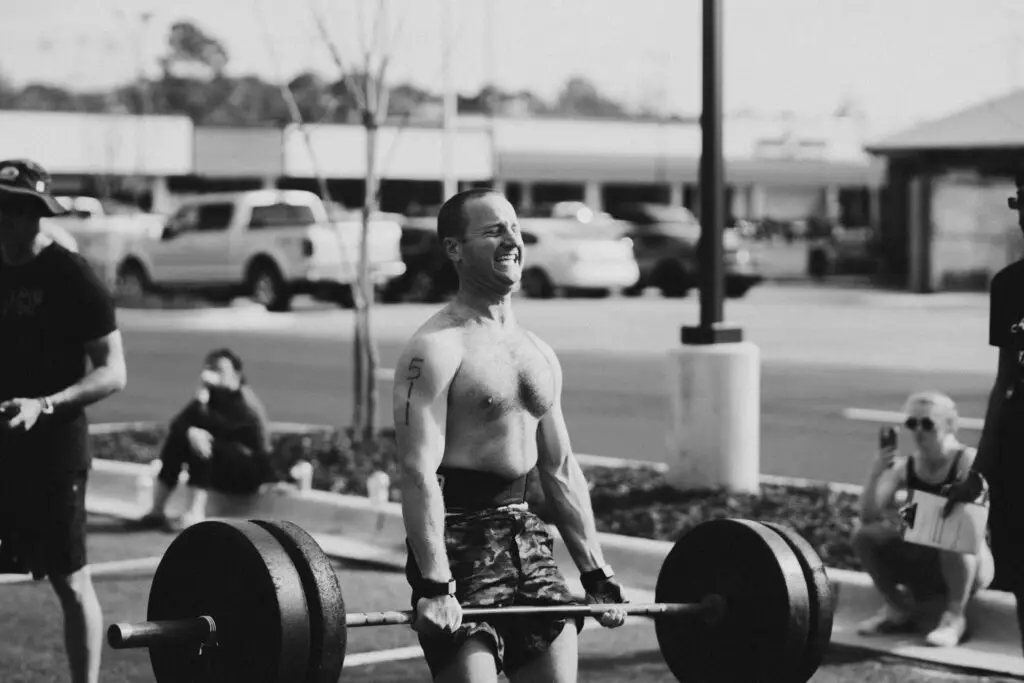
Conclusion
Building muscle after 40 is not about working out every single day. It’s about working smarter, not harder. Rest and recovery are not luxuries; they are essential components of the muscle-building process. By embracing a sustainable and effective training plan that includes 3-4 strength training sessions per week and active recovery on your off days, you can take control of your fitness and achieve your muscle-building goals. Ready to build a smart and effective routine? Start your free trial on the 12reps app today.
References
- [1] The effect of aging on skeletal-muscle recovery from exercise: a review – https://pubmed.ncbi.nlm.nih.gov/18268815/
- [2] Age-Associated Differences in Recovery from Exercise-Induced Muscle Damage: A Narrative Review – https://pmc.ncbi.nlm.nih.gov/articles/PMC10854791/
- [3] Effects of Resistance Training Frequency on Measures of Muscle Hypertrophy: A Systematic Review and Meta-Analysis – https://pubmed.ncbi.nlm.nih.gov/27102172/
- [4] Active Recovery: How It Works and Exercise Ideas – https://www.healthline.com/health/active-recovery

